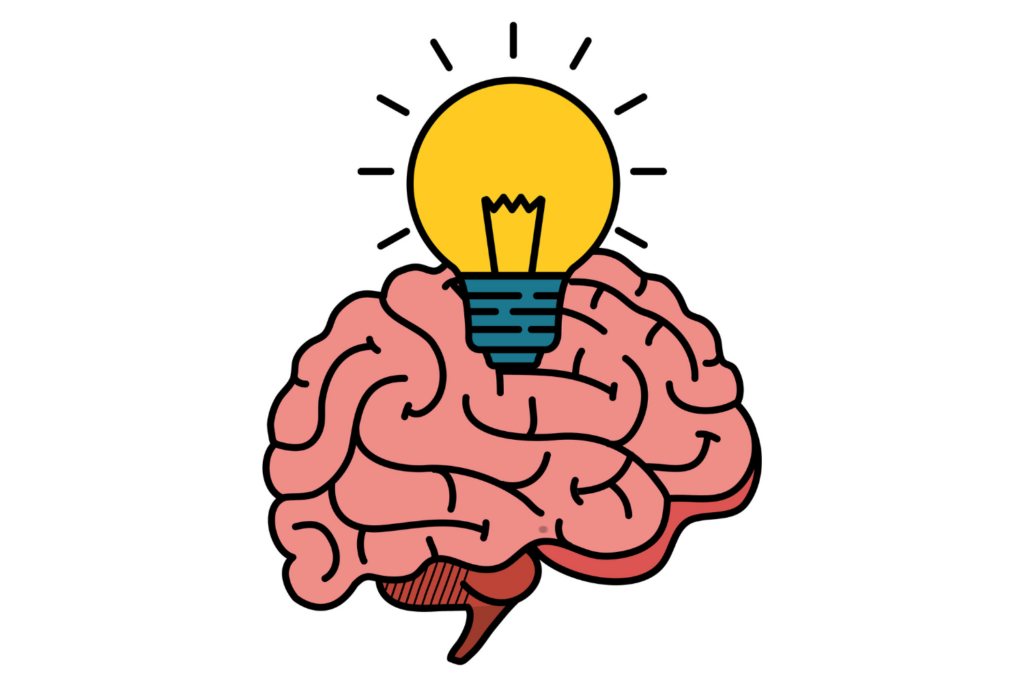
Creativity and the Brain
Just as there are numerous definitions of creativity, there are many ways to explain where inspiration comes from. Some explanations are magical while others are miraculous, metaphorical, or even medical. I think all of these can be meaningful as we explore what creativity is, what it can do for us, and its role in society. This post, however, specifically explores the brain science of creativity. It asks what happens in our brain that creates the conditions for creativity and what happens when we have an “aha” moment or a glimpse of inspiration.
Brain Imaging and Inspiration
The development of the brain science of creativity has much to do with the advancements in brain imaging over the last 40 or so years. Many people have heard of MRIs, CT scans, PET scans, or Functional MRIs. The technology to monitor people’s brain activity as they do a variety of tasks has led to many breakthroughs in the understanding of mental processes, including creativity. Dr. Arne Dietrich, a neuroscientist at the American University of Beirut, coined the term “transient hypofrontality” to refer to the observed brain conditions in which creativity may occur.
The term “transient hypofrontality” may sound complicated, but if we break it down, it’s not so difficult to understand. To begin, “transient” describes something that comes and goes. “Hypo” means the lack of something (it’s the opposite of “hyper,” which means an excess of something). So far, we have “transient hypo,” which means the coming and going of the lack of something. “Frontality” means “in the front part,” and in this case, we are talking about the front of the brain. The frontmost region of the brain, an area known as the prefrontal cortex, is responsible for a lot of our higher reasoning abilities. So, if we put all three parts of the term “transient hypofrontality” together, we get a layperson’s definition of “the coming and going of a scarcity of activity in the front of the brain where complex reasoning happens.” So, we now know what the term means, but how does it relate to creativity?
The prefrontal cortex is responsible for higher reasoning abilities, such as organizing and planning based on previous experiences. Permanent hypofrontality would represent the loss of the ability to carry out complicated tasks. If that state comes and goes (i.e., is transient), however, it means that the highly structured way that the front part of the brain organizes information comes and goes. It turns out that this state is fertile ground for creativity.
Creativity and Connections in the Brain
A shorthand definition for creativity is the ability to make new connections for a result that is useful. Creativity, therefore, is all about new connections. But what stops the brain from making new connections at all times? In other words, why don’t we have access to creativity in all brain states?
Throughout the course of our lives, we learn to put information into certain categories. The more those categories become automatic, the harder it is to break free from those patterns of thinking. In the special brain state of transient hypofrontality, those categories become less rigid because the activity in the part of the brain that keeps those categories separate is coming and going; in other words, it is transient. In that state where categories of information are less rigid, new connections can be made, and voila… creativity is possible

An example might be helpful. Perhaps in a certain region of the country, potatoes are in abundant supply. In the cuisine of that place, potatoes are exclusively components of savory dishes: people only think of using potatoes in soups and stews, or as side-dishes such as fries, chips, or mashed potatoes. One afternoon, a chef/restaurant owner in that region is planning out desserts for the coming days. He has an abundant supply of inexpensive potatoes but doesn’t consider using them in sweet dishes because “potatoes” and “desserts” are in two separate categories in his brain. He decides to take his dog out for a long walk as the weather is particularly nice. While on his walk, his mind wanders, and he slips into the brain state of transient hypofrontality. In that brain state, the categories of “potatoes” and “desserts” are momentarily able to connect, and he comes up with a new (and creative) way that he can use inexpensive potatoes in delicious desserts for that week’s menu.
This example is one from the area of the culinary arts, and also from business/economics, but transient hypofrontality and its resulting creativity can occur in any field or realm of human experience. Thanks to brain imaging technology and research in cognition, we have a better scientific understanding of what happens in the brain to create the conditions for creativity. This is not to undermine other cultural explanations of creativity; I like the mystical idea of being visited by a creative Muse, for example. One of the wonderful things about creativity is that people can chose to explain inspiration in ways that are helpful and productive for them. I might use what scientists have discovered about transient hypofrontality in order to engage in activities that will cause the Muses to visit me on a more regular basis.
Stay tuned to my blog for further explorations of activities that are thought to induce transient hypofrontality, creative cognition, or visits from the Muses of creativity.